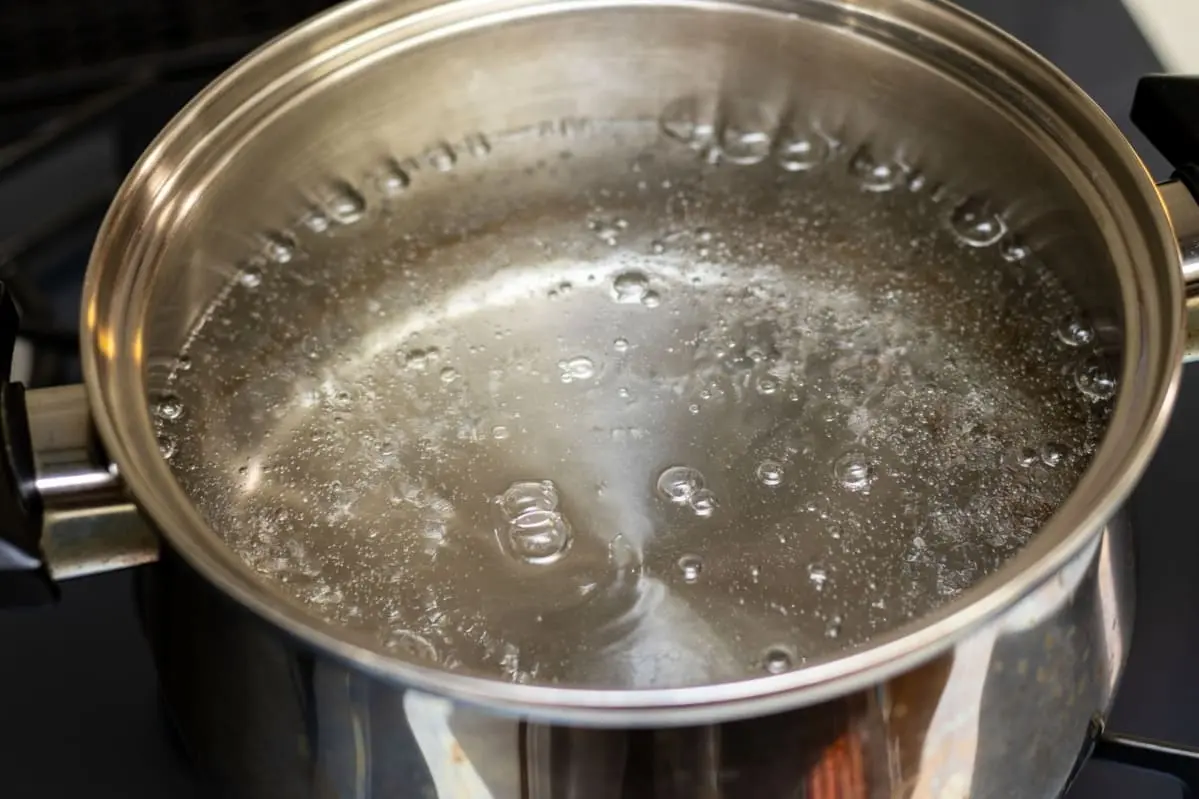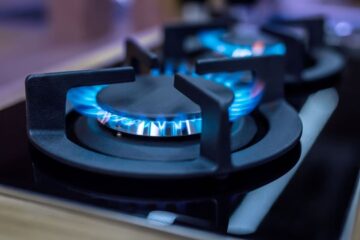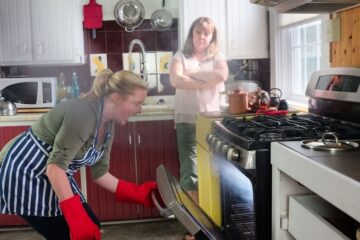When it comes to cooking, timing is often the key to creating a perfect dish. Knowing exactly when to add ingredients or remove them from heat is crucial for ensuring the flavors and textures are right.
But what about when you’re supposed to simmer a sauce or broth? How do you know if it’s simmering or boiling? That’s where the art of detecting comes in. Simmering is a gentle cooking method that involves keeping a liquid at a low and constant temperature, just below the boiling point. The aim is to produce a slow, steady flow of bubbles, creating a flavorful and smooth result.
In this article, we’ll explain what does simmer look like and how to detect it with ease. We’ll also cover the differences between simmering and boiling and provide tips on how to get the most out of this versatile cooking technique. So, whether you’re a seasoned cook or just starting, this guide is essential for anyone looking to master the art of simmering.
What does simmer mean?
To “simmer” is a cooking term that refers to cooking food gently in liquid at a temperature just below the boiling point, typically between 180°F and 205°F. This method gently cooks and tenderizes ingredients, such as meats and vegetables, and allows flavors to develop and mingle in soups, stews, and sauces.
What Does Simmer Look Like?
When food simmers, it is cooked in liquid just below the boiling point. You can tell if a liquid is simmering by looking for the following signs:
Bubbles
Small bubbles will begin to rise to the surface of the liquid and pop. The bubbles will be slow and steady, breaking the surface of the liquid consistently.
Surface Movement
The surface of the liquid will be gently moving and have a slight ripple.
Steam
A small amount of steam will be visible above the surface of the liquid.
“It is important to note that a full boil and a simmer are different and that you should adjust the heat as necessary to maintain the simmer. A full boil will have a rapid rolling boil with large bubbles and a lot of steam, while a simmer will have a much gentler movement of the liquid. If cooking something that needs to be simmered, keep the heat low and consistent to prevent the liquid from boiling.”
The Different Types Of Simmer.
Simmer refers to a cooking technique where a liquid is heated to a temperature just below boiling point, where small bubbles begin to form on the surface. There are three main types of simmer:
Gentle Simmer
Small bubbles rise to the surface of the liquid occasionally. It’s used for delicate dishes such as soups, sauces, and custards.
Low Simmer
Small bubbles rise to the surface continuously. It’s used for dishes that need to cook slowly, such as stews, braises, and stocks.
Hard Simmer
Large bubbles rise to the surface continuously. This method is primarily for dishes that require quick reduction, such as reductions and syrups.
The Purpose Of Simmer.
The purpose of simmering is to slowly cook food or liquids in a covered pot, which helps to develop and deepen flavors, tenderize ingredients, and thicken sauces. It is often used in soups, stews, sauces, and braises to cook ingredients evenly and gently without browning or to burn them.
The low and slow heat of simmering also helps to break down tough cuts of meat, making them more tender and flavorful. Simmering can also cook grains, such as rice and pasta, and prepare hot beverages, such as tea and hot chocolate.
How To Start Simmering?
Here is a step-by-step guide on how to start simmering:
Choose the right pot
Use a pot with a heavy bottom to distribute heat evenly and prevent scorching.
Add liquid
Add the liquid you want to simmer, such as water, broth, or sauce.
Bring to a boil
Place the pot on the stove and turn up the heat to bring the liquid to a rolling boil.
Reduce heat
Once the liquid has reached a boil, reduce the heat to low, just below boiling point.
Watch for bubbles
The surface of the liquid should have gentle bubbles breaking the surface and no large, rolling boils.
Adjust heat as needed
If the liquid starts to boil, lower the heat until it returns to a simmer.
Add ingredients
Once you have a gentle simmer, add any ingredients, such as vegetables, meats, or seasonings, to the pot.
Simmer until done
Cover the pot and continue simmering until the ingredients are cooked to your desired level.
Serve
Once the ingredients are fully cooked, turn off the heat and serve your dish. Enjoy!
Tips For Simmering.
Tips to help you simmer successfully:
Keep the lid on
Covering the pot helps maintain the temperature and prevents evaporation.
Don’t stir too much
Stirring can raise the temperature and disrupt the gentle simmer. Stir only when necessary.
Skim the surface
If there is foam or impurities on the surface of the liquid, use a slotted spoon or a skimmer to remove them.
Adjust heat as needed
If the liquid is simmering too rapidly, lower the heat. If it’s not simmering enough, raise the heat slightly.
Taste regularly
Regularly taste the liquid to ensure it’s cooking at the right pace and has the desired flavor.
Don’t overcrowd the pot
Adding too many ingredients at once can lower the temperature and disrupt the simmer.
Simmer for the right amount of time
Different ingredients will require different simmering times, so follow the recipe or use a meat thermometer to check for doneness.
Don’t let the liquid boil
Boiling will cause the ingredients to cook too quickly and become tough or overcooked.
Frequent Mistakes To Avoid While Simmering.
Some common mistakes that people make while simmering include:
Not using enough liquid
When simmering, ensure enough liquid to cover the cooked ingredients fully.
Over-stirring
Stirring too much while simmering can cause the ingredients to break apart and lose shape.
Not monitoring the heat
Simmering should take place at low heat, so it is important to keep an eye on the temperature and adjust as necessary.
Using the wrong pot
A pot that is too small or too large can affect the temperature and rate of cooking. Make sure to use a pot appropriately sized for the ingredients being simmered.
Not adjusting the heat
Some ingredients may require a higher or lower heat to cook properly, so make sure to adjust the heat as needed.
Skipping the pre-heating step
Before simmering, heat the liquid to boiling point before reducing the heat and continuing to simmer.
Ignoring the cooking time
Simmering times vary based on the ingredients and recipe, so check the cooking time and remove the ingredients from the heat once they are fully cooked.
Not adding seasonings at the right time
Some seasonings, such as salt and pepper, should be added near the end of the cooking time, while others can be added at the beginning. Make sure to follow the recipe instructions for seasoning.
What Does A Gentle Simmer Look Like?
A gentle simmer is a cooking technique in which liquid is heated to just below boiling point, and small bubbles are visible on the surface. The liquid should be low enough heat that the bubbles break gently and slowly. This is usually around 180-185°F (82-85°C).
What Does A Low Simmer Look Like?
A low simmer is when a liquid is heated to just below the boiling point, resulting in small, slow bubbles and gentle movement on the liquid’s surface. The temperature of a low simmer is usually around 180-190°F (82-88°C).
What Temperature Is Simmer On A Stove?
The temperature of simmering on a stove is usually between 185°F and 205°F. It is important to maintain this temperature range to avoid boiling or overcooking the ingredients. Boiling is when the liquid reaches a rapid and continuous state of turbulence. This high heat can cause ingredients to break apart or become overcooked.
What Does Simmer Look Like On A Gas Stove?
Simmering on a gas stove looks like small, gentle bubbles slowly rising to the surface of the liquid but not breaking its surface. It is a slow, steady movement of the liquid, not a rapid boil.
The bubbles should be small and inconsistent, with some larger bubbles appearing every once in a while. The liquid should also be just slightly agitated, with a gentle movement.
If the liquid is boiling, it will look very different. Boiling is characterized by large, rolling bubbles that continuously break the surface of the liquid, creating a lot of turbulence.
What Does Simmering Milk Look Like?
Simmering milk is heated until just below boiling point. A gentle bubbling along the sides of the pot or saucepan characterizes it. The milk’s surface will appear slightly rippled, with steam visible and a light film of foam forming on the top of the milk.
If the temperature is too high, the milk will begin to boil, become frothy, and may spill over the sides of the pot. Simmering milk should be monitored closely and frequently stirred to prevent scorching and to ensure an even heat distribution.
What Does Simmering Look Like Compared To Boiling?
Simmering is a gentler form of boiling, with bubbles just breaking the surface of the liquid occasionally. In contrast, boiling is characterized by vigorous, constant bubble formation and movement throughout the liquid. The temperature of a simmering liquid is usually around 185°F (85°C) to 205°F (96°C), while the temperature of boiling water is 212°F (100°C) at sea level.
- Is Simmer Lower Than Low? (An Essential Guide By Experts)
- What Temperature Is Simmer 1-10? (The Essential Guide)
- What Temperature Is Simmer On An Electric Stove? (Setting The Perfect)
What Is A Simmer Pot?
A simmer pot is a cooking pot specifically designed for simmering food. It is typically made of heavy-duty materials such as cast iron, stainless steel, or enameled cast iron to distribute heat evenly and prevent scorching. It usually has a large surface area, a tight-fitting lid, and a low profile to allow the contents to simmer slowly and evenly.
The pot is used for cooking delicate dishes such as sauces, soups, stews, and braises that require a slow, low-temperature cooking process to extract the fullest flavor and tenderness from the ingredients.
What Is The Difference Between Simmer And Boil?
Simmering and boiling are two cooking techniques that involve heating liquids. The main difference between the two is the temperature and agitation of the liquid.
Simmering is a gentler method of cooking, where the liquid is heated to just below boiling point (185°F to 205°F / 85°C to 96°C), and small bubbles begin to rise to the surface. The liquid should be kept at this temperature for a prolonged period, allowing flavors to develop and ingredients to cook through evenly.
Conversely, boiling is when a liquid is heated to its boiling point (212°F / 100°C at sea level) and vigorously agitated by rapidly rising and bursting bubbles. This cooking method is typically used for cooking foods quickly and sterilizing liquids.
How Can You Tell When Something Is Simmering?
To tell when something is simmering, you can look for the following signs:
Bubbles
A simmering liquid will have small bubbles that occasionally break the surface.
Temperature
The temperature of a simmering liquid is typically around 185-205°F (85-96°C).
Movement
A simmering liquid will have gentle movement, as opposed to a rolling boil which is more vigorous.
Sound
A simmering liquid will make a quiet, gentle sound, unlike a boiling liquid which makes a lot of noise.
You can also place a slightly ajar cover on the pot to check the movement of the liquid without losing heat, which will help you accurately identify the simmering process.
The Final Words
In conclusion, simmering is an important cooking technique that requires attention to detail and practice to master. Understanding what simmer looks like can make your dishes more flavorful and satisfying. The key to detecting simmer is observing the movement of the liquid and the bubbles that form.
A true simmer will have occasional bubbles breaking the surface, while a full boil will have rapid, constant bubbling. It’s important to adjust the heat to maintain a gentle simmer and not let it turn to a boil, which can change the texture and taste of your dish. With these tips, you’ll be well on mastering the art of simmering and creating delicious, perfectly cooked meals every time.
Frequently Asked Questions
Do You Cover Pot When Simmering?
Yes, it’s common to cover a pot when simmering. Covering helps to trap heat and moisture, which can regulate the temperature and create a more consistent simmer. However, keeping the lid slightly ajar is important to allow some steam to escape and prevent boiling. The exact amount of coverage will depend on the recipe, so it’s best to follow specific instructions.
Should You Cover Soup When Simmering?
It is recommended to cover soup when simmering to maintain the temperature and help the ingredients cook evenly. Covering prevents evaporation, allowing the soup to thicken and concentrate its flavors. Additionally, the covering can help prevent splattering, making for a cleaner and safer cooking experience.
How Long Do You Simmer?
Simmering time varies depending on the recipe but generally lasts between 20-30 minutes. It involves maintaining a low boil where small bubbles break the surface of the liquid. The goal of simmering is to cook and infuse flavors into dishes gently.



